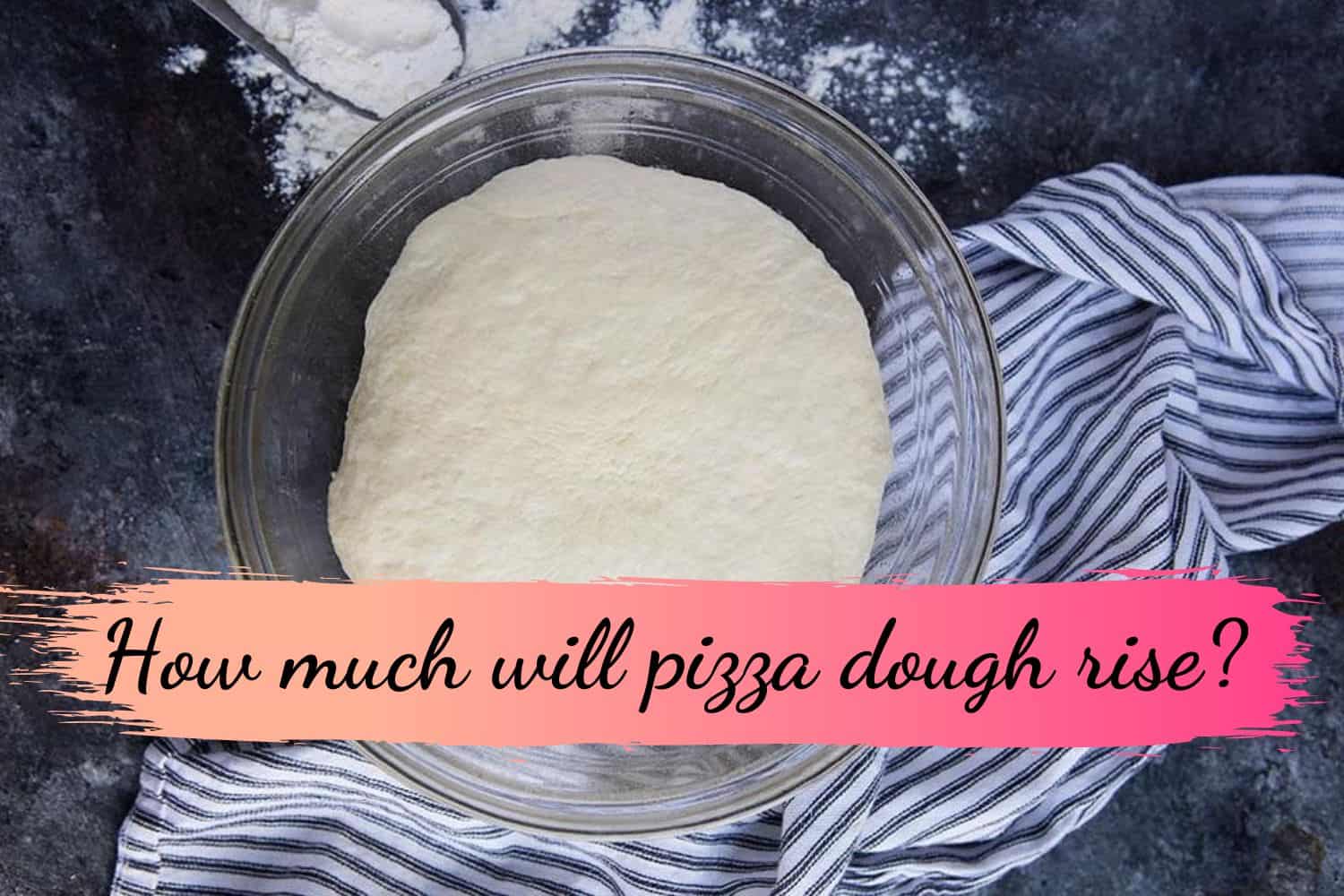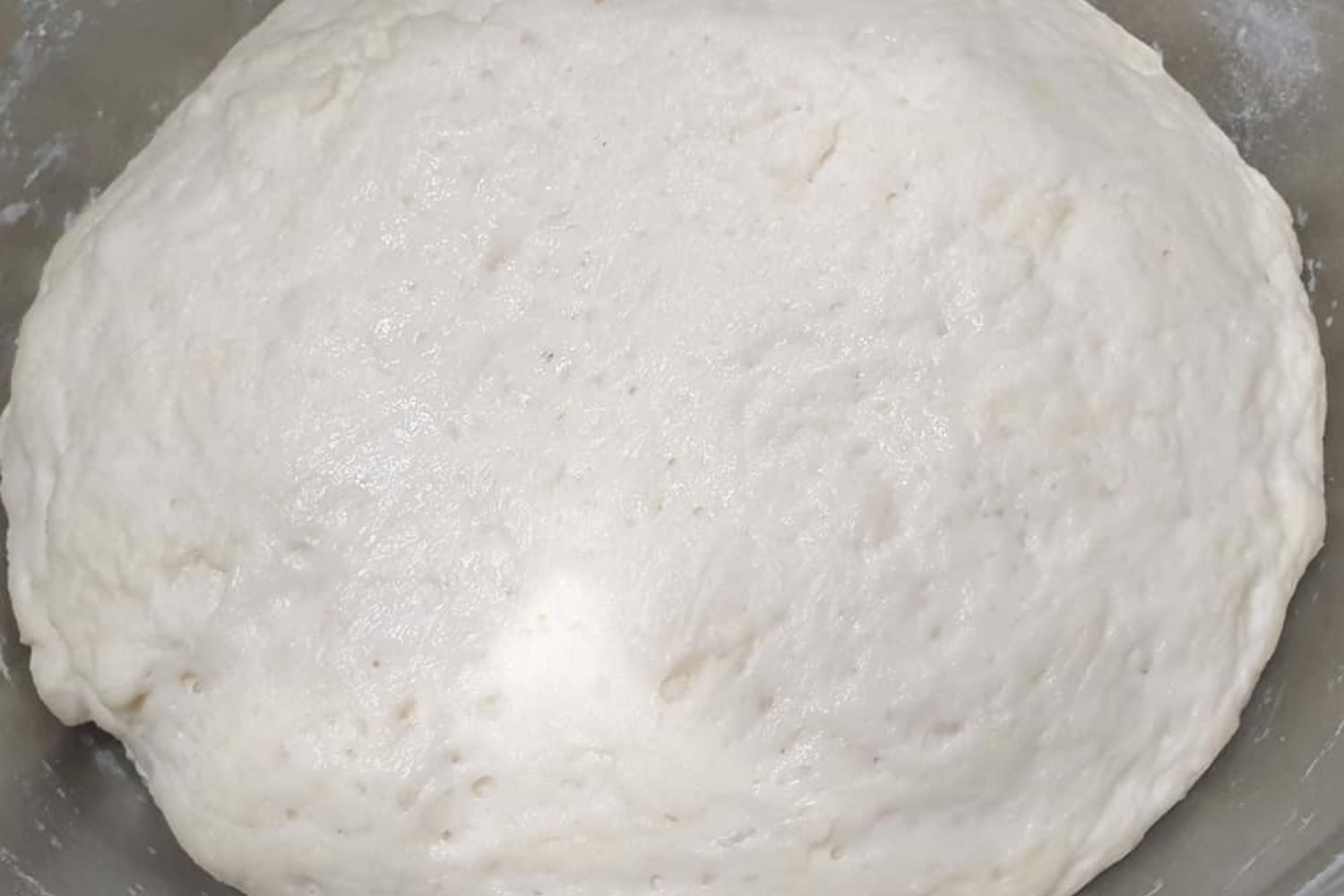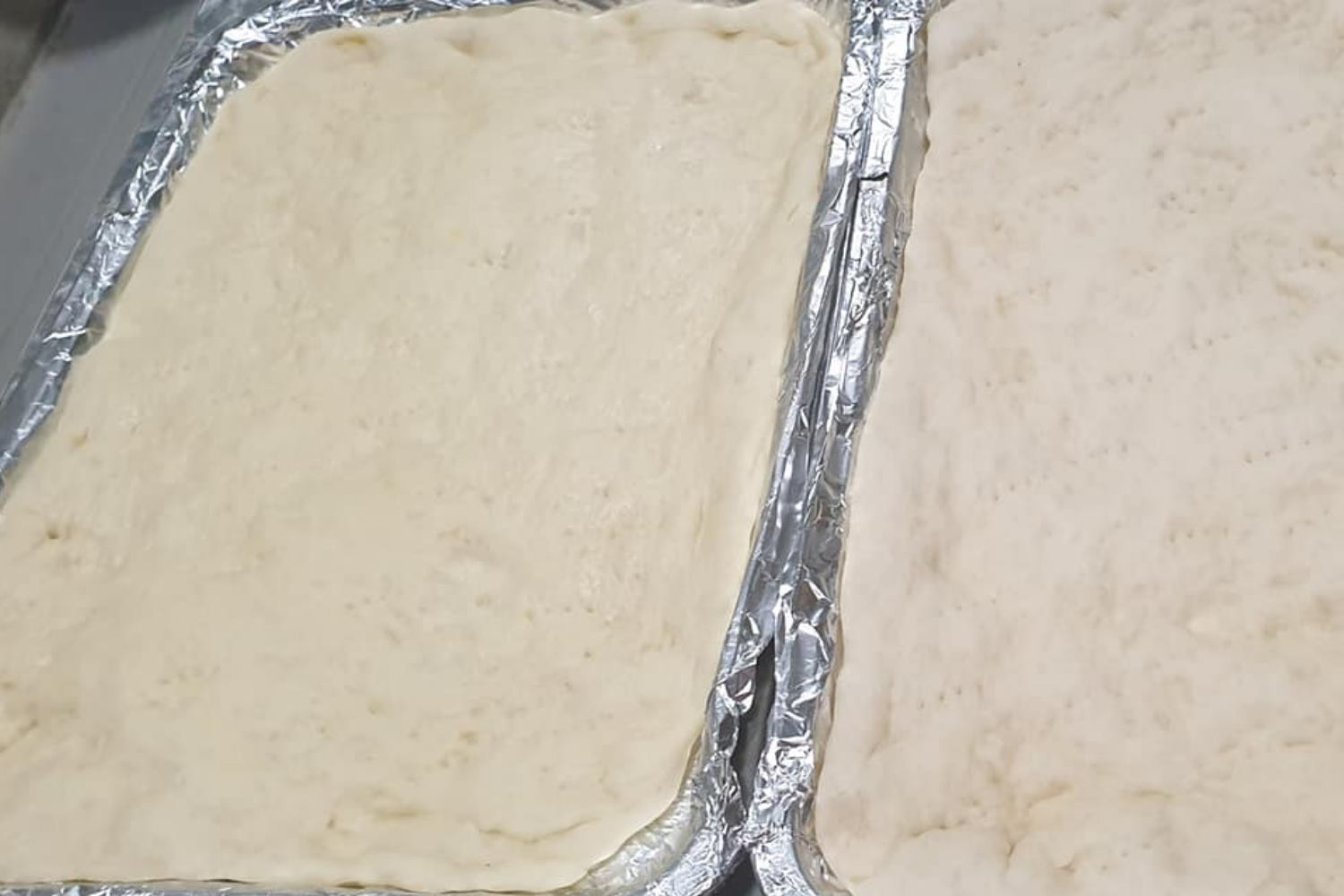How much will pizza dough rise?
Are you in the process of mastering your pizza recipe and want to know how much will pizza dough rise when making it from scratch? Making homemade pizza can be an exciting, tasty experience – but nailing down the perfect fluffy crust requires getting a few details right. The general rule is to let pizza dough rise until it has doubled in size then it’s perfect.
The good news is that with a little bit of practice and understanding, you’ll be able to make delicious pizzas in no time! In this blog post, we’ll show you exactly how much your dough should rise so you can keep track of where your pies are at during their baking journey.

Understanding the basics of pizza dough rising
Pizza dough’s light and airy texture come from the proofing process, in which yeast activates to release CO₂. This also helps with gluten development by strengthening it into a protein network that traps air bubbles when baking your pizza for an enjoyable nice and crispy crust on the outside paired with a soft interior.
Exposure to warmer temperatures can speed up fermentation but be careful not to let your dough rise too quickly or for too long. Overproofing results in bitterness and insufficient structure which detracts from the flavor. Knowing when enough is enough will ensure perfectly-risen pizza every time!
How to know when your pizza dough is ready for stretching and baking

Knowing when your pizza dough is ready to go in the oven can be tricky. To ensure a tasty finished product, you’ll want to make sure it has risen correctly before baking. To ensure readiness, perform a finger or wooden spoon poke test to see if it leaves an indentation that slowly springs back; this indicates desired elasticity and indicates optimal baking conditions. If not quite ready, try leaving for 15 minutes more before checking again – you may also want to consider using a thermometer as anything colder than 65 degrees will be too difficult to stretch out properly.
How much will pizza dough rise?
The general rule for pizza dough is to let it double in size before stretching and baking. This can take anywhere from 1-2 hours, depending on the conditions of fermentation. If you’re unsure whether your dough has risen enough, perform a poke test – if it doesn’t spring back, your dough needs more time!
Also, keep an eye out for the edges which should appear puffy and airy with visible bubbles; once this happens, your dough is ready to be stretched and baked.
Making pizza from scratch can be challenging but also incredibly rewarding! With an understanding of how much pizza dough will rise, you’ll be able to create delicious pizzas every time. Letting your dough rise until doubled in size will give you a perfect fluffy crust that’s sure to be a hit!

Reasons Why Your Pizza Dough Is Not Rising Even After Proofing
If you’re having difficulty getting your dough to rise even after proofing it for the recommended amount of time, there are a few possible reasons why:
1. The yeast is dead
Your yeast may have expired or been stored incorrectly. Check the expiration date and make sure to store it in a cool, dry place.
If it’s been sitting on a shelf for more than a few months, it might not be viable anymore. Go ahead and try using some fresh yeast or proofing the yeast before adding it to your dough.
To ensure your baking project turns out the way you want it, check that your yeast is still active. You can easily test this at home.
Make an easy water and sugar mixture – just make sure it’s dissolved- then add in 1/4 teaspoon of yeast. If bubbles form within 15 minutes, that means your yeast can be used for all of those delicious recipes!
By following these tips and understanding how much pizza dough will rise, you’ll be able to create delicious homemade pizzas in no time! With perfectly-risen crusts and flavorful toppings, everyone will be impressed by your handiwork!
2. Incorrect water temperature
When proofing yeast, water temperature is key. Too cold or too hot can kill your yeast. Perfectly warm tap water should be about 100 degrees F for optimal results.
Use an instant-read thermometer to confirm the temperature of your water is between 100 and 110 degrees F before adding it. If too hot, let it cool down until reaching a suitable temp; if cold, warm it for about 30 seconds in the microwave – both steps will help ensure success when baking with yeast.
3. Too much flour
Flour is a common ingredient in pizza dough recipes, but too much of it can lead to disaster. Yeast needs the right balance with other ingredients and time for fermentation – otherwise, your result may lack that signature airy texture we all love!
Poorly proofed pizza dough is all too common due to an error many of us make: overdoing the flour. Too much added can cause yeast cells critical for fermentation and air bubble formation to die off, effectively ruining your pie before it even hits the oven!
4. Too much yeast
Too much yeast in your pizza dough recipe can lead to a disastrous result – the mixture will rise too quickly and then collapse during baking. To prevent this, take an extra step by proofing the active dry yeast before combining it with other ingredients. Proofing your yeast simply involves allowing it to sit in warm water for 10 minutes; if bubbles appear on top of the water, you know that you’ve added just enough!
5. Overproofing
Making the perfect pizza dough can prove to be a tricky endeavor– if you’re not careful, your dough can rise too much! This overproof means that when you go to bake your masterpiece, all of the yeast in the mixture has already consumed its sugar and thus cannot yield any additional rising.
To rescue an overcooked batch of dough from tragedy: remove it from whatever proof container is being used, Release all built-up air by lightly punching at the dough before reshaping it into desired shape or form and reintroducing it in the box. Now get ready for some tasty results!
Conclusion
After understanding everything discussed in this post, it is important to look at your ingredients and the environment you are making pizza dough when deciding how much it will rise. Every situation is different but good practice is to use enough yeast, warm water, and allow the dough to first rest so that proper fermentation can take hold.
Ultimately though, practice makes perfect. The more familiar a chef becomes with the dough they are making, the better understanding of how each element affects the final product and their ability to manipulate those elements for the best rise possible. Bend your pizza dough and make it work for you so that you can enjoy delicious pizzas all day long.
Visit our website for more info.
References:
3 Ways to Make Easy Pizza – wikiHow
How to Store Bought Pizza Dough?
How To Make the Best Basic Pizza Dough
I’m Vance Douglas, and I love making pizza. In fact, I love it so much that I decided to build my own oven to make it in. It’s a brick oven that I made myself, and it’s the best pizza oven you’ll ever find.
Making pizza is a passion of mine, and I’m always looking for new ways to make it even better. I’ve been making pizza for years, and I continue to learn more about the art every day. My goal is to create the perfect pizza, and I’m getting closer and closer every time.



